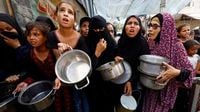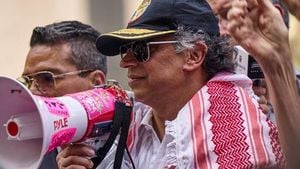The deadly August 25, 2025, attack on Nasser Hospital in Khan Younis, Gaza, which killed 22 people including five journalists, has ignited a storm of controversy and unanswered questions that continue to reverberate through the international media community. According to a comprehensive Reuters investigation, the strike—carried out by Israeli forces—was based on a critical misidentification, flawed command decisions, and a lack of transparency that fits a troubling pattern of journalist deaths in the region.
On that fateful morning, journalists Hussam Al-Masri of Reuters, Mariam Dagga of the Associated Press, and Moaz Abu Taha, a freelance reporter, were among those gathered on the hospital’s eastern stairwell—a spot regularly used by media to capture live footage of the ongoing conflict. Al-Masri, who had positioned his camera there at least 35 times since May, was recording live broadcasts for Reuters clients worldwide. He often shielded his camera from the blistering Gaza heat with a green-and-white prayer rug, a detail that would later become central to the tragedy.
Israeli military officials initially claimed the attack targeted a Hamas camera that was allegedly filming troops from the hospital. They said the camera was covered by a towel, which they viewed as suspicious. But as Reuters meticulously pieced together visual evidence, more than 100 videos and photos, and interviews with over two dozen sources—including Israeli military officials and academics—it became clear the camera in question belonged to Al-Masri. The cloth was not a towel, nor was it placed there by Hamas; it was Al-Masri’s personal prayer rug.
After Reuters confronted the Israel Defense Forces (IDF) with its findings, a military official admitted that the troops had acted without the required approval from the senior regional commander overseeing Gaza operations. This breach of protocol raises serious questions about the decision-making process that led to the strike. The official told Reuters, “The camera from that picture was the camera that they attacked.” However, no explanation was provided as to why the necessary authorization, which should have included a legal assessment to ensure compliance with international law, was not obtained.
Prime Minister Benjamin Netanyahu described the incident as a “tragic mishap.” Yet, the explanations offered have done little to satisfy the families of the victims or the international community. Ismail Al-Thawabta, director of the Gaza government media office, dismissed the Israeli claim as “false and fabricated,” accusing Israel of attempting to “cover up a full-fledged war crime against the hospital, its patients and medical staff.”
The IDF’s initial review found that troops targeted the camera because it was seen repeatedly in the same spot, covered by a cloth. They characterized the camera as a threat, citing the use of cameras by Hamas to plan attacks. However, witnesses and Reuters’ own visuals team confirmed that only Al-Masri used a large video camera on a tripod at that location, and always covered it with his prayer rug—not to evade detection, but to protect the equipment from the elements.
Adding to the confusion, the IDF has yet to clarify several key issues: why no warning was given to hospital staff or Reuters before the strike; why the stairwell was shelled a second time nine minutes later, killing additional journalists and emergency responders; and who ultimately approved the attack. Mohammed Saqer, head of nursing at Nasser Hospital, told Reuters, “If they had warned us, we would have prevented this catastrophe.” Reuters also confirmed it received no prior warning.
The aftermath was harrowing. Reuters photographer Hatem Khaled, who was preparing to start his workday outside the hospital, rushed inside after the first blast and found Al-Masri already dead. As Khaled and rescuers carried Al-Masri’s body down the stairs, the stairwell was hit again, injuring Khaled and killing others. “I couldn’t do anything to help him other than document what had happened,” Khaled recounted.
The attack on Nasser Hospital is not an isolated event. According to the Committee to Protect Journalists (CPJ), 201 journalists and media workers have been killed since October 7, 2023, the vast majority of them Palestinians killed by Israeli forces in Gaza and Lebanon. CPJ’s regional director, Sara Qudah, said, “None of these incidents prompted a meaningful review of Israel’s rules of engagement, nor did international condemnation lead to any change in the pattern of attacks on journalists over the past two years.”
Despite repeated assertions by the IDF that it does not intentionally target journalists, the pattern is deeply troubling. Since October 2023, Israel has accused at least 15 journalists or media workers it killed in Gaza and Lebanon of being members of militant groups, but CPJ found no case in which credible or sufficient evidence was presented to justify these killings. The IDF maintains that its strikes are directed only at military targets and operatives, and that it seeks to mitigate harm to civilians, including journalists. “Given the ongoing exchanges of fire, remaining in an active combat zone has inherent risks,” an IDF spokesperson told Reuters.
The lack of accountability is particularly stark. Israel has never published the results of a formal investigation or held anyone responsible for the deaths of journalists in IDF operations. This includes high-profile cases such as the October 2023 tank shelling in Lebanon that killed Reuters journalist Issam Abdallah, and the May 2022 shooting of Al Jazeera’s Shireen Abu Akleh, who was wearing a clearly marked press vest at the time. In both instances, the IDF eventually admitted its forces were likely responsible, but no criminal investigations were launched, and no full account was provided.
Legal experts interviewed by Reuters noted that attacks on hospitals are typically considered war crimes, with only narrow exceptions. Even if a hospital is being used for hostile activities, attackers must ensure civilian harm is not excessive and must provide warnings to allow compliance. In the Nasser Hospital case, no such warnings were issued, and the stairwell was a well-known location for journalists, making the decision to strike even more questionable.
As the international community continues to demand answers, the deaths of Al-Masri, Dagga, Abu Taha, and their colleagues serve as a somber reminder of the escalating risks faced by journalists in conflict zones—and the urgent need for transparency and accountability when tragedy strikes.




